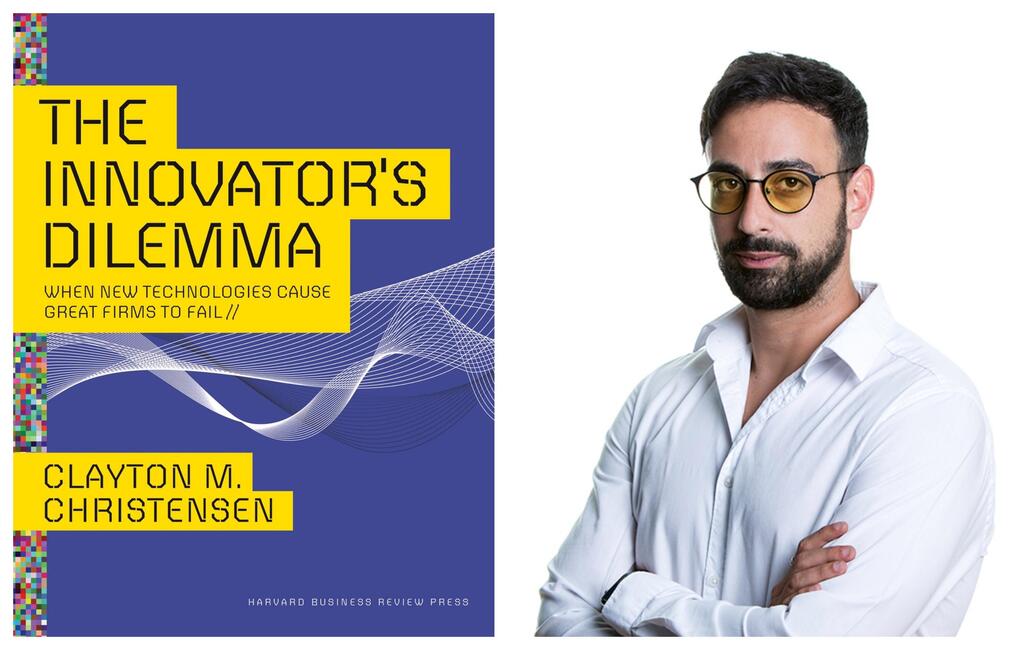
Ronen Menipaz is the Founder of M51 Entrepreneur Labs, a hands-on equity partner, as well as a tech investor and entrepreneur. He has joined CTech to share a review of “The Innovator’s Dilemma” by Clayton Christensen.
Title: “The Innovator’s Dilemma”
Author: Clayton Christensen
Format: Book
Where: Commute
A mainstay on shortlists about entrepreneurship, ‘The Innovator’s Dilemma’ portrays (in a rather amazing way) why a company should be at the forefront of disruptive innovation instead of sustainable innovation.
The book portrays several key arguments:
-
The organizational strategy of firms operating in established, mature, markets is not effective for disruptive technologies.
-
Creating a new market is less risky and more rewarding than entering established markets
-
Being a first-mover is an advantage when developing disruptive innovation, and indifferent when acting in an established market.
-
Emerging markets are not attractive for established firms because they do not provide significant short-term gains. It is at this stage, however, that firms should enter them in order to become market leaders in the future.
-
In order for firms to maintain longevity, they should establish smaller sub-organizations that act independently. These organizations are not to be pressured into making a short-term profit, but should instead be given a unique identity and allowed to create their market.
-
These unique firms shouldn’t be pressured into being right the first time. In fact, they should be considered to be taking bets, and the most important factor should be reducing sunk costs in case of a failed bet, in order to make pivoting cheap. “Business plans” should instead be “learning plans”.
-
Customers follow the “Buying Hierarchy” depending on the maturity of the market. The phases, in order, are functionality, reliability, convenience, and price.
-
Aside from excelling in all aspects of the Buying Hierarchy, the characteristics that make disruptive products valuable in emerging markets are the same ones that make them worthless in mainstream markets.
-
The best way to identify disruptive technologies is by creating a graph with performance improvement demanded in the market vs. performance improvement supplied by the technology.
-
Disruptive technologies involve existing technology in a new architecture.
Christensen definitely changed the way I perceive innovation, showing me that great companies can fail even if they do everything right because of the dynamic nature of technology and the importance of staying ahead. We glorify tech yet, doubling down on innovation is something that can get challenging in the day-to-day entrepreneurial lifestyle. BUT here’s the twist: the most important point is that disruption is actually achieved through the practice of repackaging and marketing what already exists. Offering a lower price point to new audiences that aren’t economically viable for the landscape’s established players.
In addition to being dated after over twenty years (fair enough), the examples are presented in an academic manner. For example, most industry analyses focus on disk drives. Poorly presented charts and graphs.
Who Should Read This Book:
I think it’s a must-read for anyone in business. It provides a different way of thinking about new technologies, which emerge by nature in this Information Age that we live in.
Fun fact: the book was a recommendation I got from no other than the Founder and then CEO of HubSpot Brian Halligan, when he appeared on my podcast.
